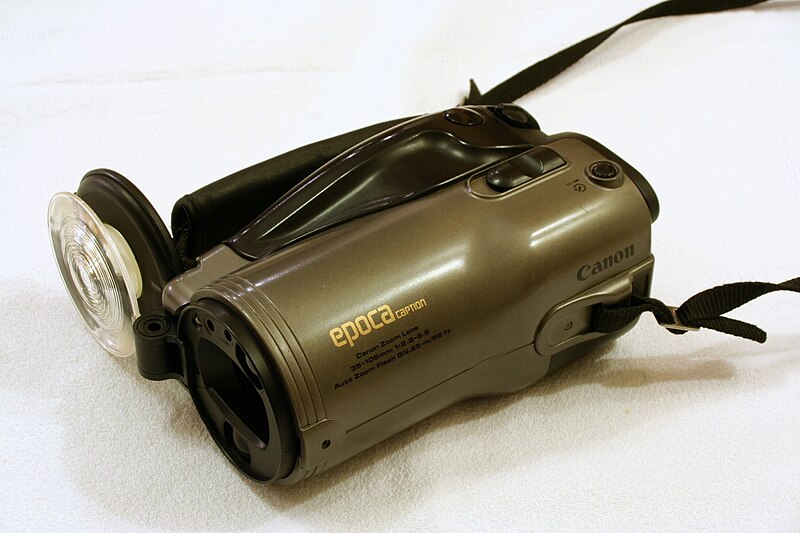
In the vast world of film photography, Canon has always been a pioneer, consistently pushing the boundaries of innovation. Released in 1990, the Canon Photura has made a unique mark in the annals of photography. With its video camera-like design, this 35mm film camera stands out, not just for its appearance but also for its feature-packed capabilities. Let’s delve deeper into what makes this camera a noteworthy piece in the world of film photography.
Design and Features
For those familiar with Canon’s extensive Sure Shot range, the Canon Photura will seem like an outlier. Unlike the typical rectangular or square designs of most 35mm film cameras, the Photura takes on a cylindrical shape reminiscent of video cameras. This approach makes it an interesting player in the “bridge camera” market, a segment that saw competitors like the Chinon Genesis launching similar models in the late 1980s.
In 1992, Canon decided to build upon the Photura’s success by releasing a follow-up model – the Photura 135, which boasts a 38-135mm lens.
Film and Film Format
While the Canon Photura is compatible with a wide film speed range, from ISO 25-3200 with DX Encoding, it’s essential to pick the right film to match your needs.
For beginners, I recommend starting with the more forgiving and readily available Kodak Portra 400 or Fuji Superia 400. These films offer great color reproduction and work well in varied lighting conditions. Advanced photographers looking to experiment might gravitate towards the Ilford HP5 for black and white shots or the Kodak Ektar 100 for richer, more saturated colors.
Drop-in film loading simplifies the process. The S-shaped film take-up ensures that your film is secure and ready to capture those candid moments. Plus, the added ability to shoot macro photography from 0.55 m to 0.8 m opens up a world of close-up opportunities.
Power Source and Battery Life
The Photura relies on a single 6V 2CR5 lithium battery. These are efficient and readily available. If you’re looking to purchase one, here’s a link to Amazon for your convenience.
Exposure Control and Light Metering
Navigating through a range of shutter speeds from 2s-1/250s, the Photura offers flexibility in capturing motion. Paired with its exposure and metering capabilities, this camera ensures well-lit shots regardless of your environment.
Size, Weight and Ergonomics
Despite its unusual design, the Photura is well-balanced, weighing in at 645g (with battery). With dimensions of 100×74×156mm, it’s comfortably portable, and the ergonomic features, such as the direct zoom viewfinder, ensure ease of use during extended shoots.
Technical Specifications
| Specification | Detail |
|---|---|
| Lens | 35-105mm f/2.8-6.6 (10 elements in 9 groups) |
| Shutter Speeds | 2s-1/250s |
| Film Speed Range | ISO 25-3200 (with DX Encoding) |
| Power | One 6V 2CR5 lithium battery |
| Dimensions | 100×74×156mm |
| Weight | 645g (with battery) |
| Built-in Flash | Guide No. 12 – 25 (at ISO 100 in meters) |
| Viewfinder | Direct zoom viewfinder |
| AF System | 3-point Smart Autofocus with near-infrared beam |
Conclusion
Canon’s Photura is a unique offering in the world of film cameras. With its peculiar design and feature-packed offerings, it holds its own in a competitive market. Whether you’re new to photography or a seasoned professional, the Photura is worth exploring for its capabilities and the distinct aesthetic it offers. As you venture into the realm of film photography, remember to experiment, have fun, and let cameras like the Photura guide your creative journey.


